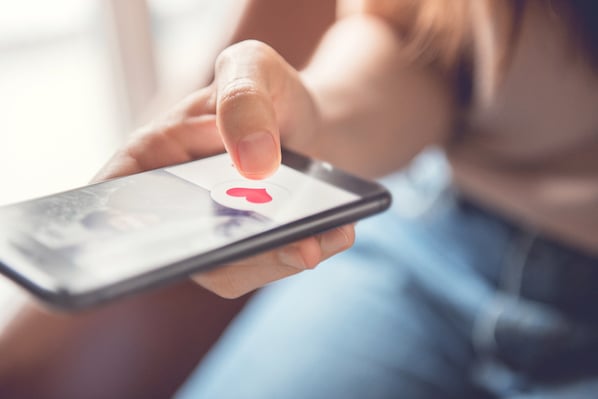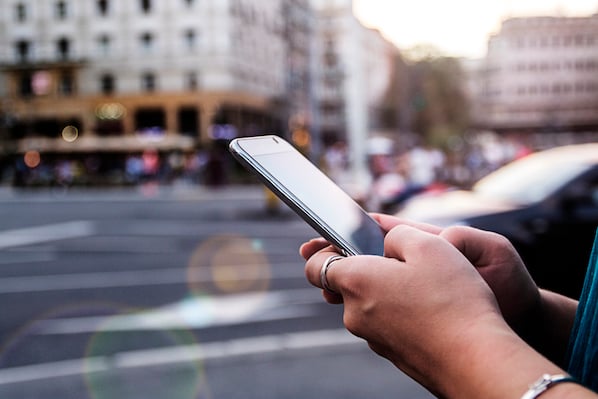Whether you have a social media customer service strategy in place or not, read this blog post to learn how to deliver great Twitter customer service, and get inspired by these brands doing it well today.
Twitter for Customer Service
Twitter is ideal for customer service because it encourages users to distribute and consume information quickly. When customers have problems, questions, or feedback, they can immediately contact a business without having to use traditional support channels. And, their messages are shared publicly, so the company is motivated to respond as fast as possible.
When done right, customer service via Twitter can generate delightful customer experiences. After all, customers want to communicate with brands on the channels they use every day. If your company can effectively support them on social media, you'll generate positive engagement for your business.
But, Twitter can also be unforgiving. If your reps aren't equipped to handle customer demand, or aren't sure how to communicate on the platform, you can harm more than just one customer's experience. When other Twitter users see that you're failing to meet a customer's needs, they'll be quick to support their fellow customer. This can lead to negative buzz, or worse, a viral incident.
That's why we've compiled the list below of brands that are doing an excellent job supporting and engaging customers on Twitter. But, before we dive in, let's take a look at what these tweets have in common.
What the Best Customer Service Tweets Have in Common
We combed through the replies of different brands' Twitter accounts, and we found a few things in common with the best of the best -- the brands people love tweeting and interacting with, no matter what their concern.
1. Prompt
The best Twitter customer service strategies involve prompt replies to messages from customers.
This one is kind of a no-brainer. Customers are reaching out on social media because it's quick, easy, and they're already online, so they're trying to get help in the easiest way possible. Make it even easier for them by having a plan in place to triage and reply to incoming tweets and direct messages (DMs) as quickly as possible.
In some cases, you won't be able to answer a question or solve a problem via Twitter, so clearly spelling out how the customer can escalate their issue (via DM, phone, or email) is key here.

Don't worry -- we get that sometimes you have to sleep. In a tweet or in your bio, share the hours when customers can access customer service via Twitter, and let them know how they can reach out during off hours with an urgent issue.
2. Unique
To save time, you might consider writing up a list of FAQs for your team to reference when they get the same few questions and queries over and over again on Twitter. But every response shouldn't be the same -- customer service tweets should be personalized to show customers you value their time and patience.
Uniqueness also helps showcase your brand's personality and shows the customer that there's a human typing. Personalized responses will make your customer feel good, make your brand lovable, and will buy you goodwill with the customer in case the issue escalates.
It's fine to use a template as a starting point when sending out customer service tweets, but make sure each one is adjusted to the specific issue and customer reaching out. Studies show that our brains are activated when we hear or read our own or others names, so tap into that effect to make customers feel special and valued.
3. Signed
To the point above, signing customer service tweets with your name of initials helps in two ways: It helps customers to know that a real person is reviewing and responding to their issue, and it gives them a point of reference if they need to bring their concern to email or the phone to get it resolved.
Customers don't want to repeat their issue over and over again as they bounce from Twitter to email to the phone -- they want customer support reps with the context in front of them so they can get the answer they need as quickly as possible.
Signing tweets helps customers to identify who they've been working with if they have to escalate their issue to a different channel -- and it helps you to find them so you can pick up the case where you left off.
(HubSpot's shared inbox tool will help you and your team to manage incoming requests from a variety of channels, including Twitter.)
4. Helpful
This might seem obvious, but some of the best customer service tweets we've seen go above and beyond -- by sharing additional resources customers can use for help.
Make sure your Twitter reply is helpful and resolves the customer's issue to the degree possible -- but make sure to go the extra step and share a blog post, a video, or another resource that could be helpful for them in the future.
5. Conversational
Mirror the customers' language and tone in your customer service tweets. You're a human, and they're a human, so the exchange should reflect that. Use emojis, GIFs, images, and hashtags to make the exchange fun and human -- once you've solved the issue, of course. (The customer might not find your GIF amusing if you haven't provided a solution first.)
Customer Service Tweets from 10 Top Brands
1. ClassPass
Twitter Handle: @classpass
Fitness brand ClassPass helps users access a variety of different workout options, all in one place -- so it's no surprise that tweets from ClassPass are uplifting, motivating, and body-positive.

ClassPass also makes sure to have fun responding to customer tweets -- whether they're compliments, complaints, or questions.
Recently, ClassPass rolled out some changes users weren't big fans of -- and they got a lot of feedback on Twitter. But in the replies, ClassPass tweets offer an explanation, a solution, and additional resources to clear it up:

Why we like ClassPass: ClassPass's customer service tweets are prompt, helpful, and showcase the brand's personality. They provide customers with resources and context when they have feedback to share, and they offer a variety of avenues to resolve the problem via DM, email, phone, or with individual fitness studios.
2. Adobe
Twitter Handle: @AdobeCare
Adobe's suite of creative tools are used by a variety of creatives and creators -- so it's no surprise that, in addition to providing customer service, Adobe uses Twitter to compliment and showcase the works of their loyal customers and followers, like this recent retweet that we absolutely love:

When customer questions and complaints start rolling in, the replies are thorough -- often asking questions and providing additional resources to walk customers through a fix on their own:

If there isn't an immediate resolution possible -- as is the case when customers are offering product feedback or suggesting an update -- Adobe is transparent about whether a suggestion will be possible or not, and how customers can work around it in the meantime.

Why we like Adobe: Like other examples you'll see on this list, Adobe has a dedicated customer support channel on Twitter that's separate from its brand account, @Adobe. In many cases, a brand's Twitter account is run by the marketing team, and creating a dedicated support channel helps Adobe quickly and efficiently reply to urgent requests.
3. Zappos
Twitter Handle: @Zappos
Online shoes and clothing store Zappos is famous for prioritizing and improving customer experience -- and that shows when you review its Twitter account.

While most of Zappos' time on Twitter is spent accepting compliments, when they do get a customer query, Twitter replies are always clear, succinct, and personalized.
They even go above and beyond -- answering questions completely unrelated to their store sometimes. Guess the word has spread about how helpful and responsive Zappos is on social media:

Why we like Zappos: Zappos answers every tweet, every time, with a funny, quirky, and helpful reply. They clearly go the extra mile for their customers offline, and that shows on Twitter too, where they offer surprise gifts, funny GIFs, and product suggestions whenever they can.
4. Domino's Pizza
Twitter Handle: @dominos
The Domino's Pizza Twitter account became legendary a few years ago with this earnest response to a hilarious customer predicament:
But Domino's replies helpfully to questions and problems they can actually solve, too.

They also help customers order pizza the way they want to -- on Twitter, without having to talk to another person, of course: 
Why we like Domino's: Domino's gets a lot of Twitter flack for issues with pizza delivery, and they're quick to apologize, own up, and offer a way to resolve it with the customer. The rules of customer service still apply on Twitter, so make sure you're quick to apologize if the fault is yours and to offer a path to resolution.
5. Taco Bell
Twitter Handle: @tacobell
Taco Bell brings the funny across all of its social channels, and its Twitter customer service is a nice mix of funny, quirky, and still helpful:

Why we like Taco Bell: Taco Bell maintains its brand identity -- funny and delicious -- while still delivering helpful customer service. It's important to note that this approach doesn't work for all brands, and Taco Bell matches its tone to the gravity of the customer situation so they aren't laughing at a customer who's seriously aggravated.
6. Glossier
Twitter Handle: @glossier
Skincare and makeup brand Glossier, where most of our money is spent if we're being truly honest, prides itself on creating a positive message around women's beauty. It also built its customer service program around social media and responds to every message and comment it receives -- the good, the bad, and the ugly.
Glossier's Twitter is no exception:

Whether it's responding to customer feedback, answering questions, or providing detailed skincare tips, Glossier makes sure to reply -- every time:

Why we like Glossier: They respond to every message, every time, no matter what. Make sure your customer service strategy doesn't let any tweets slip through the cracks. Remember, your customers can give negative feedback on a very public platform, so make sure you're not ignoring anybody.
7. Hootsuite
Twitter Handle: @Hootsuite_Help
Social media management tool Hootsuite has a dedicated customer support channel on Twitter, and their tweets check off all of the boxes in our list of criteria above. But Hootsuite goes above and beyond by making even routine tweets fun and personalized:
Hi there! Miguel here from Mexico City office. It's a nice sunny day today and I'm enjoying some coffee while checking Twitter. Hit me up with your Hootsuite questions. :) ^MT https://t.co/4pTtmEIEYopic.twitter.com/cp7ArkSVXu
— Hootsuite Helpers (@Hootsuite_Help) March 10, 2018
Steps like these make customers love a brand -- which is important when it comes to providing customer service:
Why we like Hootsuite: Hootsuite shares details about the support rep managing the Twitter account, along with fun GIFs and pictures, to help users get to know them if they need help. Don't be afraid to get personal, not just when you're signing off on tweets, but when building your brand as friendly, helpful support reps.
8. JetBlue Airways
Twitter Handle: @JetBlue
JetBlue Airways is another brand made legendary for going the extra mile for customers (frequent flyer miles, of course), and that customer-first mindset is on full display on Twitter, too.
JetBlue even helps customers do what needs to be done on Twitter when other customer support channels aren't working properly:
Why we like JetBlue: We scoured JetBlue's Twitter and couldn't find many instances of dissatisfied customers -- which is a rare sight when it comes to airline dealings. Even in cases where they couldn't give the customer exactly what they asked for, they provided supporting links and other solutions to help. Context is extremely helpful when reasoning with frustrated customers, and JetBlue always makes sure to provide it.
9. HubSpot
Twitter Handle: @HubSpotSupport
Like other examples on this list, we have a dedicated customer support channel here at HubSpot. We make sure to communicate the hours we're online and offline, and we personalize each and every message we get:
We also make sure to refer customers to other helpful resources on our HubSpot Community page, which helps customers find answers to common questions and connect with other users, or our knowledge base:
 Why we like HubSpot: For one thing, self-esteem is important. And for another thing, if we may toot our own horn, it's hard providing step-by-step instructions for using software via social media -- we make sure to provide clear and concise instructions, or refer customers to a longer knowledge base article when we can, to solve the issue to the degree possible on the platform the customer is already using.
Why we like HubSpot: For one thing, self-esteem is important. And for another thing, if we may toot our own horn, it's hard providing step-by-step instructions for using software via social media -- we make sure to provide clear and concise instructions, or refer customers to a longer knowledge base article when we can, to solve the issue to the degree possible on the platform the customer is already using.
10. National Cowboy Museum
Twitter Handle:@ncwhm
Here's an example of smaller brand making a big splash with its Twitter account. The National Cowboy Museum handed the keys to its account over to a security guard, who wasn't exactly experienced with the platform. The results are priceless.

Tim not only tweeted funny comments like the one above, but also poked fun at his lack of experience with social media. He openly admitted he had never used things like hashtags or retweets, and gave his best attempts to master the social nuances of the platform.

Why we like the National Cowboy Museum: Aside from the laughs, this Twitter strategy says a lot about embracing a genuine tone for your brand on social media. People will respond and engage with you more if they know there's a person on the other side of the tweet, not a team of marketing experts. Even though Tim was breaking the mold by signing his tweets and posting unconventional content, people could relate to how genuine he was.
Have you had a great customer service experience via Twitter? Share it with me and I may add it to the list.
Social Media Customer Service
.png?width=112&height=112&name=Image%20Hackathon%20%E2%80%93%20Vertical%20(61).png)









![5 Twitter Alternatives for Social Media Customer Service [& Why You Should Keep Them on Your Radar]](https://53.fs1.hubspotusercontent-na1.net/hubfs/53/twitter-alternatives.png)

![More Brands Are Using Social Media Messaging for Service, but Are Consumers Interested? [New Data]](https://53.fs1.hubspotusercontent-na1.net/hubfs/53/social%20DMs%20for%20service_featured.jpg)





